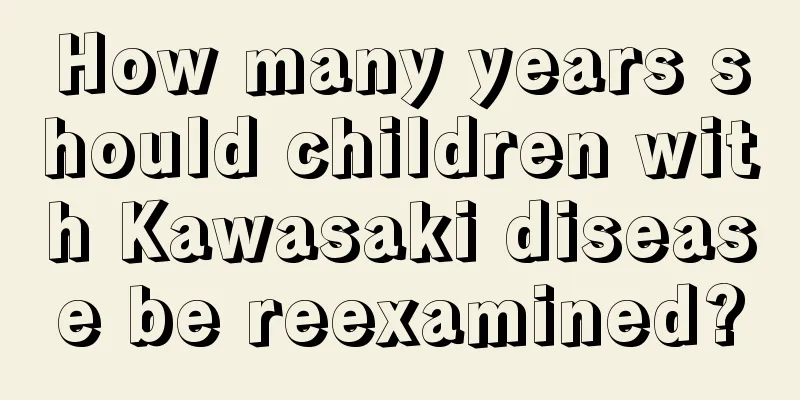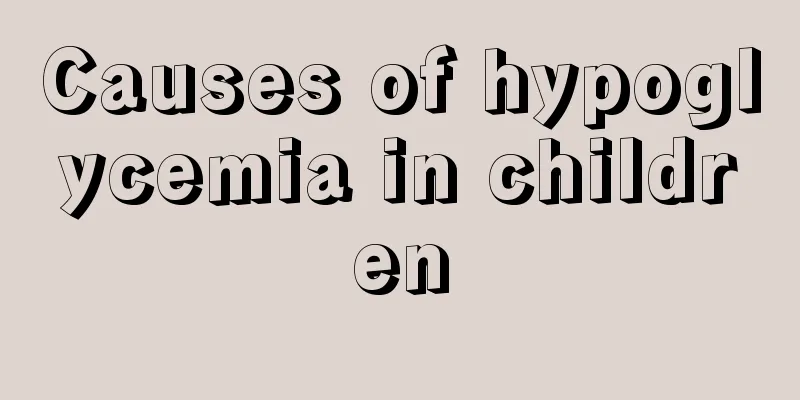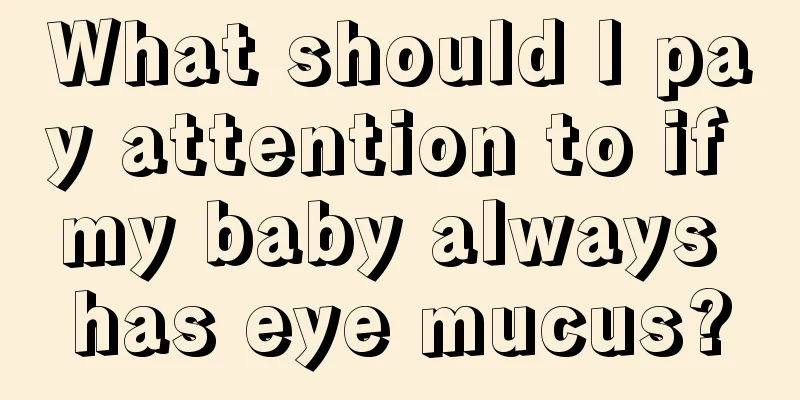How many years should children with Kawasaki disease be reexamined?

|
Kawasaki disease is a common symptom among children. It is also a disease that has a certain chance of recurring after being cured. Therefore, after a child's Kawasaki disease is cured, regular check-ups are needed to check the child's specific condition and avoid recurrence of Kawasaki disease, which may cause greater health harm to the child. So, when should children with Kawasaki disease begin follow-up examinations? 1. How many years should you be reexamined after Kawasaki disease is cured? The time for follow-up examination of Kawasaki disease is generally to see whether the coronary arteries of the child with Kawasaki disease are normal. Usually, regular follow-up examinations for heart problems must be conducted within two to seven months after recovery from Kawasaki disease, including electrocardiograms and electrocardiograms. This is very necessary because many cases of Kawasaki disease may lead to late complications due to incomplete treatment, especially cardiovascular complications: coronary artery dilatation and severe aneurysms that may persist for several years. So don’t take it lightly. After recovery, if the results are normal three times in a row, have a follow-up check every 3 to 5 years to check if there are any sequelae. 2. Why should we have follow-up examination after Kawasaki disease is cured? The sequelae of Kawasaki disease mainly include vasculitis, heart disease, myocarditis, etc. Myocarditis refers to localized or diffuse inflammatory lesions of the myocardial layer caused by various causes. Inflammatory lesions may involve the myocardium, interstitium, blood vessels, pericardium, or endocardium. The causes may be various infections, autoimmune reactions and physical and chemical factors. The course of the disease can be acute (within 3 months), subacute (3 to 6 months) and chronic (more than half a year). Kawasaki disease is a self-limited disease with a generally good prognosis. So there is no need to worry. 1. According to the results of the baby's reexamination, the inner diameter of the artery is less than 3.0MM so there is no need to worry. The course of aspirin treatment generally lasts for 6 to 8 weeks, which is about 2 months. In your baby's case, the medication can be stopped. 2. Wait six months after the disease recovers and then have a reexamination. 3. Dietary considerations after recovery from Kawasaki disease In addition, parents can take care of their children and provide them with a diet after they recover from Kawasaki disease. They can eat more high-protein foods such as fish, meat, and eggs. They should also eat more fresh vegetables and fruits on a regular basis. This way, their diet can be relatively balanced and increase their immunity. |
<<: What to do if your child vomits after eating
>>: The fastest treatment for Ganji in children
Recommend
What to do if your child doesn't poop for 3 days
Many parents will wonder what to do if their chil...
One week two months baby food
Babies aged one to two months cannot be given com...
Babies are born with teeth
Now many new parents know that babies do not have...
What causes swollen eye bags in children?
It is very common for adults to have bags under t...
Can children's cavities be cured?
It is a very common phenomenon for children to ha...
Why do children’s palms turn yellow?
If your baby's palms turn yellow, it may be c...
What to do if baby is addicted to milk?
The main food for babies is breast milk, and moth...
Cultivation of children's nap habits
Many children are full of energy, so few children...
What should I do if my child has a cold, fever and vomiting?
It is normal for children to have a fever, especi...
What are the symptoms of paralysis in children?
Paralysis in a young child is such a huge harm to...
When is the best time to wean your baby?
The baby is in a special critical period after bi...
What should I do if my baby who is less than one month old has diarrhea?
Babies who are not even one month old are very pr...
How to reduce fever in children of 38 degrees
When a baby has a fever, the baby's antibody ...
The child complained of knee pain
Knee pain can occur at all ages, especially when ...
Can childhood encephalitis be cured?
When an infant shows serious symptoms such as enc...









